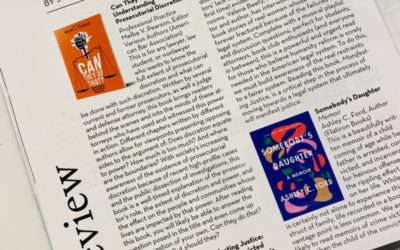Featured on New York Times – https://www.nytimes.com/tennessee-trial-jury-confederate-symbols.html
The picturesque jury chamber in the Giles County courthouse in Tennessee featured a giant window with a soaring library, but it had another striking detail: a portrait of Jefferson Davis, the president of the Confederacy, in a gold-colored frame, as well as other Confederate memorabilia.
A Tennessee appeals court unanimously ruled on Friday that a Black man convicted of aggravated assault and other charges by an all-white jury should get a new trial, saying that prosecutors failed to rebut a claim made by defense lawyers that the room where the jury deliberated was prejudicial to the man, Tim Gilbert.
The decision was issued amid a broader rethinking of the racist and Confederate symbols that have, for generations, dotted town squares, universities and courthouses across the United States. It also comes amid a greater awareness about racial bias seeping into the criminal justice system.
Mr. Gilbert, 56, who was arrested in 2018, and his lawyer argued that having both the grand jury and the trial jury deliberate in the “inherently prejudicial” room — which had been named after the United Daughters of the Confederacy — violated his right to a fair trial, an impartial jury, due process and equal protection, according to court documents.
The three-judge appeals court agreed and reversed a 2020 lower court ruling that denied Mr. Gilbert’s request for a new trial. The 31-page appeals court ruling discussed the power of symbols, flags in particular, to communicate messages about a government’s identity and values.
“The flag displayed in the jury room is no different,” the court ruled. “Its original purpose was to ‘knit the loyalty’ of those in the Confederate states ‘to a flag’ that conveyed the political ideals of the Confederacy.”
The ruling explored the ideals of the Confederacy by examining documents created at the time of the rebel government’s founding. Articles of secession identified the reasons behind the decision of the Confederate states to leave the union, the ruling said, and considered the right to hold Black people in chattel slavery as central to Southern life.
“These documents not only defended slavery, but endorsed it fully using dehumanizing and racist language,” the court wrote, adding that slavery and the subjugation of Black people “are inextricably intertwined with the Confederacy and the symbols thereof.”
“Such ideals, however, are antithetical to the American system of jurisprudence and cannot be tolerated,” it said.
Valena Beety, a law professor and deputy director of the Academy for Justice at Arizona State University, said that courts were now more aware about how bias could be introduced into the criminal justice system and were more eager to try to stamp it out.
“One way of going about that is making sure you have more diverse juries,” she said. “But this seems like another way, where you’re really looking at the influence of this memorabilia that you’re surrounded by the whole time you’re deliberating on this case.”
She added, “Symbols can allow us to be complacent or at ease with our own bias instead of challenging it, recognizing it and actually thinking about it.”
It was unclear on Saturday whether prosecutors would appeal the ruling to the Tennessee Supreme Court. They did not immediately respond to messages.
A lawyer for Mr. Gilbert, Evan Baddour, declined an interview request. He said in a text that he was pleased with the ruling, but that “there’s still a lot of work to be done, and we will continue to fight.”
The appeals court ruling mostly focused on the Confederate memorabilia in the jury room. Prosecutors said that Mr. Gilbert waived his right to object by not raising the issue before the trial, but the appeals court said in its ruling that “the location of jury deliberations is not one of the issues that must be raised prior to trial.”
Arguing that the items in the room did not improperly influence jurors, prosecutors also said that another jury in an unrelated case had deliberated in the same room and had acquitted Mr. Gilbert.
“That the defendant was acquitted by a different jury on unrelated charges has no bearing at all on the question whether the jury in this case was exposed to extraneous prejudicial information or improper outside influence,” the appellate ruling said.
Michael Working, who was president of the Tennessee Association of Criminal Defense Lawyers when the group filed a brief in support of Mr. Gilbert’s position, said the ruling put the onus on the government to prove that the deliberation room was free of coercion and influence, not on the defendant to prove that it wasn’t.
“That’s a big step,” he said.
He said the implications of this ruling could extend beyond jury deliberation rooms. He wondered about the Confederate statues that greet visitors at Tennessee’s courthouses and the messages they conveyed.
“Now the issue may turn to, how far is that sphere of influence?” he said.




